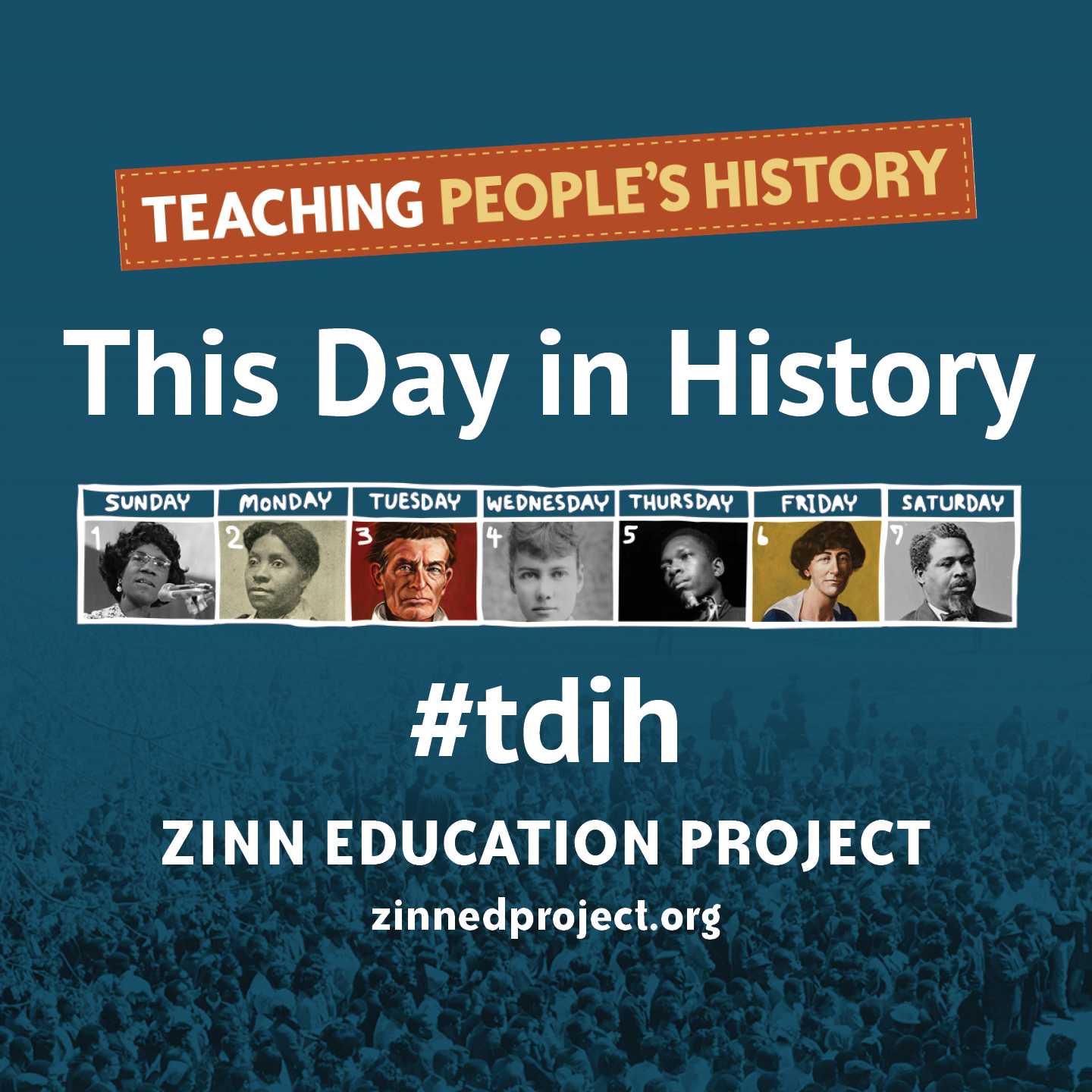 The Zinn Education Project’s This Day in History series introduces hundreds of thousands of people to stories they did not learn in school.
The Zinn Education Project’s This Day in History series introduces hundreds of thousands of people to stories they did not learn in school.
The database launched in 2018 and this past year we added more than 180 stories, which can be searched by date, theme, or state.
We need YOUR support so that we can reach more teachers with people’s history lessons and grow our resources, like the #TDIH series.
Here are 15 of the most widely shared posts of 2019.
 |
1. May 31, 1921: Tulsa MassacreWhite supremacists destroyed a thriving Black community in Oklahoma. This is one of countless examples of the historical pattern of successful Black communities being attacked through violence and/or undermined through extra-legal means. The assault in Tulsa was met by brave armed self-defense by the African American community, including World War I veterans. |
 |
2. June 27, 1954: Guatemalan Elected Leader Overthrown in CIA-Backed CoupDemocratically elected Guatemalan president Jacobo Árbenz Guzmán was deposed in a CIA-sponsored coup to protect the profits of the United Fruit Company. Arbenz was replaced by decades of brutal U.S.-backed regimes who committed widespread torture and genocide. |
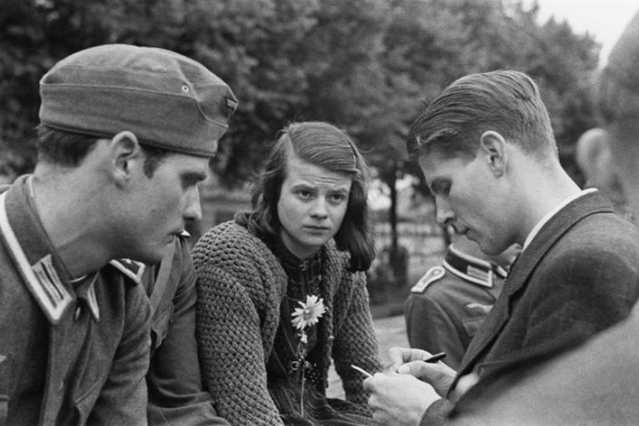 |
3. Feb. 22, 1943: White Rose Members ExecutedSophie Scholl, Hans Scholl, and Christoph Probst were executed for their role in urging students to rise up and overthrow the Nazi government. |
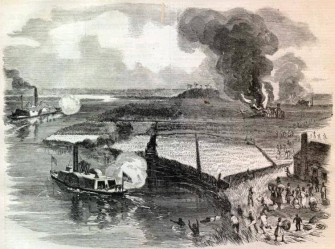 |
4. June 2, 1863: Harriet Tubman Frees Nearly 800 PeopleHarriet Tubman planned and guided a significant armed raid (becoming the first woman to do so in the Civil War) against Confederate forces, supply depots, and plantations along the Combahee River in coastal South Carolina. On this day, she helped nearly 800 people escape to freedom. |
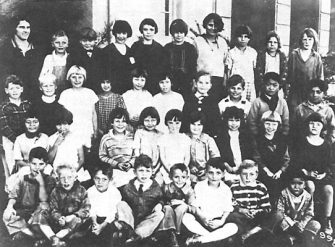 |
5. Jan. 5, 1931: Lemon Grove IncidentThe earliest of the 20th century’s school desegregation court cases occurred in the Southwest in the 1930s. In that region, Mexican-American communities, such as Lemon Grove, school officials forced Mexican and Mexican-American children to attend substandard schools. |
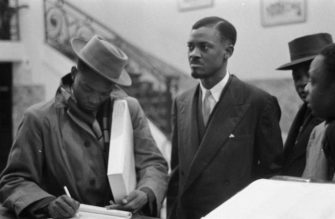 |
6. Jan. 17, 1961: Prime Minister Patrice Lumumba was ExecutedDemocratically elected prime minister of the Republic of the Congo, Patrice Lumumba, was executed by firing squad with the assistance of the governments of Belgium and the United States, just six months after taking office. |
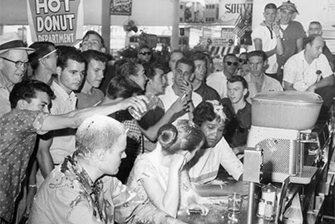 |
7. May 28, 1963: Woolworth Sit-in in Jackson, MississippiAt the Jackson, Mississippi, Woolworth lunch counter, civil rights activists carried out a sit-in protest against white supremacist segregation. The protestors endured three hours of insults and attacks by an increasingly violent white mob. |
|
|
|
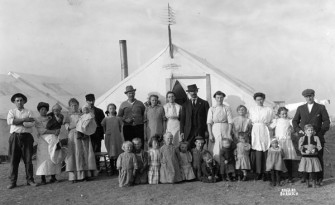 |
8. April 20, 1914: Ludlow MassacreThe National Guard fired on the camps of striking Colorado coal miners, killing eleven children and two adults. |
 |
9. May 26, 1637: Pequot MassacreA pre-dawn attack on Mystic Fort (present-day Connecticut) that left 500 adults and children of the Pequot tribe dead, the Pequot Massacre was the first defeat of the Pequot people by the English in the Pequot War, a three-year war instigated by the Puritans to seize the tribe’s traditional land. |
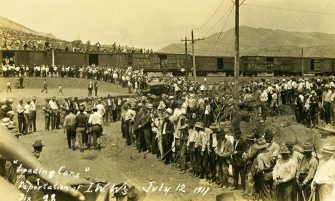 |
10. July 12, 1917: The Bisbee DeportationStriking miners and others were deported from Bisbee, Arizona. The men were forced on to cattle cars provided by the El Paso and Southwestern Railroad. |
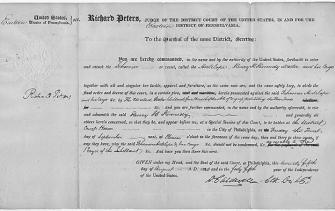 |
11. June 29, 1820: The Antelope Ship Arrived in Savannah281 Africans, many of them children, aboard The Antelope were brought to Savannah by the U.S. Treasury. Though entitled to freedom by the law of the day, the Africans were imprisoned for seven years while a legal battle ensued. |
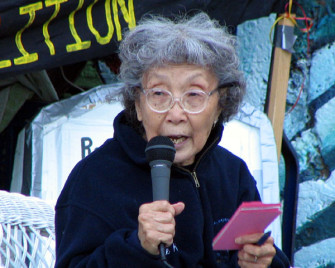 |
12. May 19, 1921: Yuri Kochiyama BornYuri Kochiyama (May 19, 1921 – June 1, 2014) devoted her life to social justice and human rights movements, including the anti-war movement, reparations for Japanese-American internees, and the rights of political prisoners. |
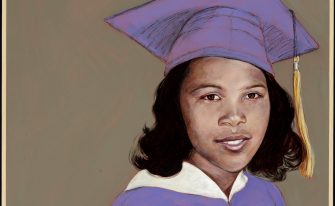 |
13. April 23, 1951: 16-Year-Old Barbara Johns Leads a Student StrikeBarbara Johns led her classmates in a strike to protest the substandard conditions at Robert Russa Moton High School in Prince Edward County, Virginia. The protest led to a court case that became one of five cases that the U.S. Supreme Court reviewed in Brown v. Board of Education of Topeka. |
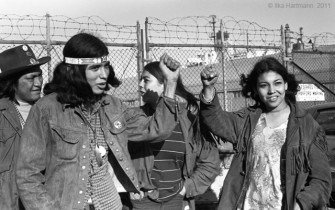 |
14. Nov. 20, 1969: Alcatraz OccupationBefore dawn, 78 Indians landed on Alcatraz Island in San Francisco Bay and occupied the island. They issued a proclamation, “We Hold the Rock,” and organized themselves immediately, electing a council and giving everyone a job. Everyone on the island voted on all major decisions. |
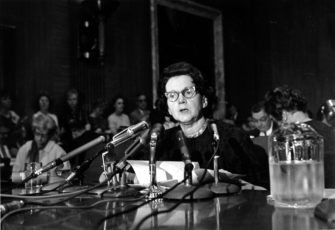 |
15. Sept. 27, 1962: Silent Spring PublishedSilent Spring by Rachel Carson exposed the devastating impact of widespread and uncontrolled pesticide use on the environment. It was an instant bestseller and the most talked about book in decades. |
We Need You
We do not receive corporate support. We rely on individuals like you so that we can provide people’s history lessons for free to teachers in 2020. Donate today.








Twitter
Google plus
LinkedIn